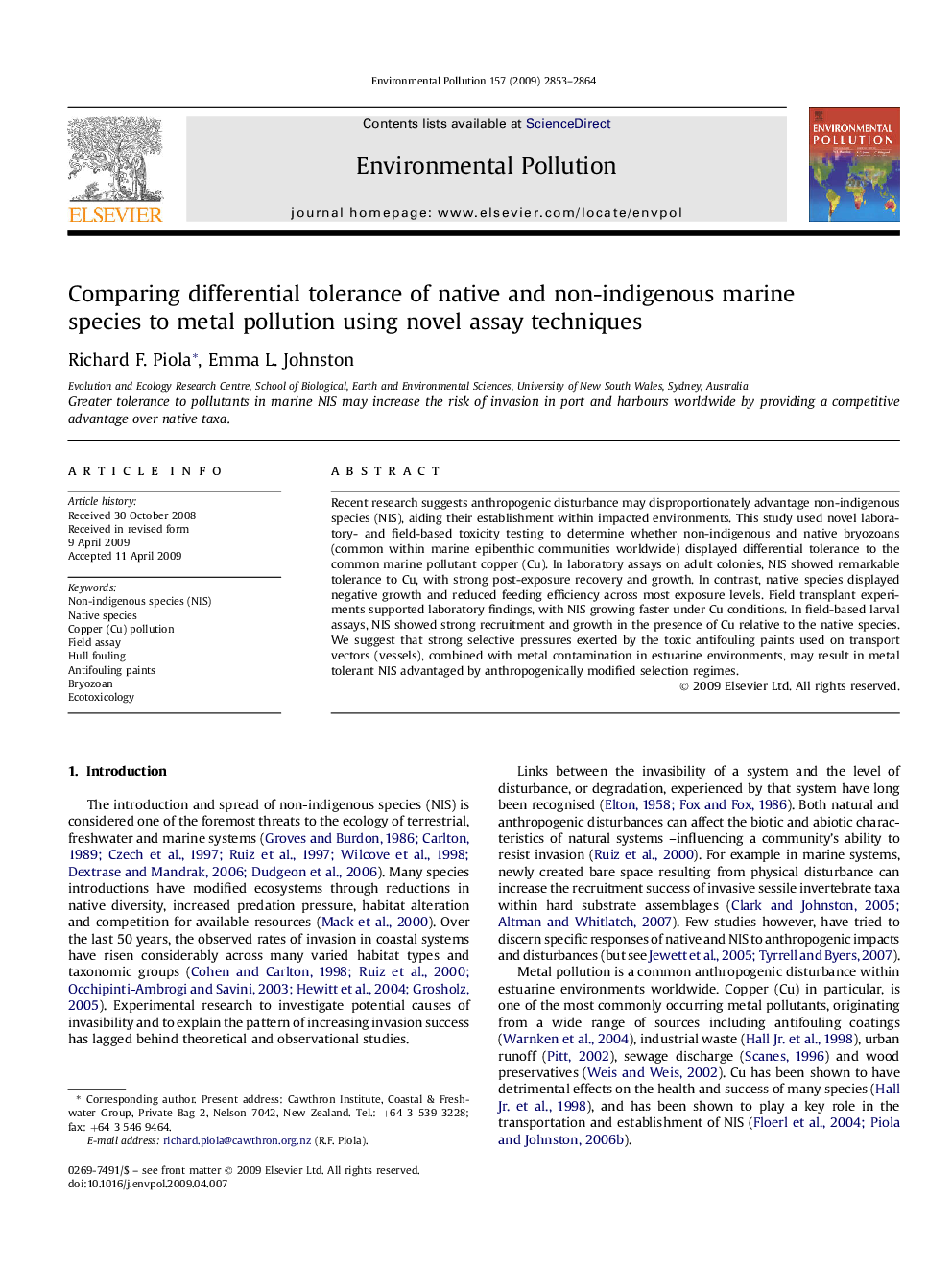| Article ID | Journal | Published Year | Pages | File Type |
|---|---|---|---|---|
| 4426386 | Environmental Pollution | 2009 | 12 Pages |
Recent research suggests anthropogenic disturbance may disproportionately advantage non-indigenous species (NIS), aiding their establishment within impacted environments. This study used novel laboratory- and field-based toxicity testing to determine whether non-indigenous and native bryozoans (common within marine epibenthic communities worldwide) displayed differential tolerance to the common marine pollutant copper (Cu). In laboratory assays on adult colonies, NIS showed remarkable tolerance to Cu, with strong post-exposure recovery and growth. In contrast, native species displayed negative growth and reduced feeding efficiency across most exposure levels. Field transplant experiments supported laboratory findings, with NIS growing faster under Cu conditions. In field-based larval assays, NIS showed strong recruitment and growth in the presence of Cu relative to the native species. We suggest that strong selective pressures exerted by the toxic antifouling paints used on transport vectors (vessels), combined with metal contamination in estuarine environments, may result in metal tolerant NIS advantaged by anthropogenically modified selection regimes.
